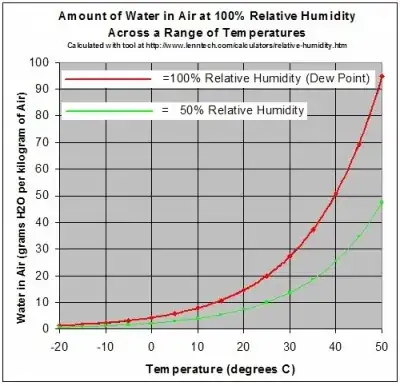Turn on your A/C, and turn up the heat.
Dry air will absorb the moisture from your windshield faster than moist air (obviously), and hot air can hold more water, so heating up the air will allow it to absorb some of the extra water on your windshield. Hotter is better, no matter what temperature you're already at.
However, that doesn't mean you should turn off your A/C. A byproduct of air conditioning is drying out the air, and since dry air can absorb more moisture from your windshield, you want the air blowing on your windshield to be as dry as possible.
You'll also (generally) want to turn off recirculate. In some cars, this is equated to the Max A/C setting (as opposed to the Normal A/C setting). The reason to turn off your recirculate is that you're assuming that the air outside your car is going to be able to absorb more water than the air inside your car (either because it's dryer or hotter than what's inside). Generally this is true, but if you're driving through fog and sometimes through rain, the air outside your car might be wetter and colder than what's inside, which will actually hurt your cause. In this case, it would be better to leave your car on recirculate. Often times though, especially in modern cars, the manufacturer does not allow this while on the Defrost airflow setting (the orange one that looks like a windshield with air blowing over it). Manufacturers will turn off the recirculate setting automatically if you shift to the Defrost setting. In this case, you'll simply have to leave your recirculate off, regardless of the conditions outside.
There's not a temperature that performs better than others; hotter is better. So turn up the heat, turn on A/C, and (generally) turn off recirculate.
